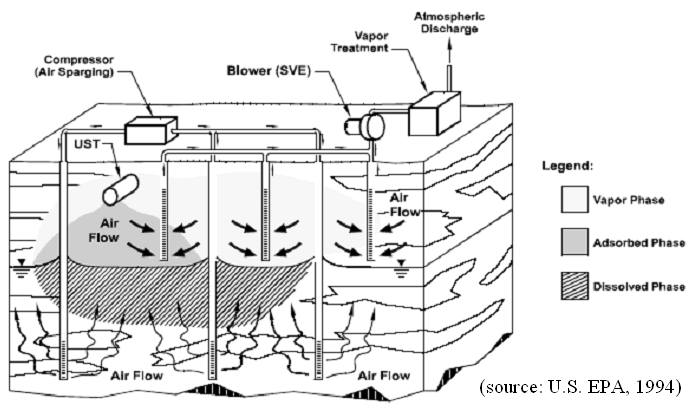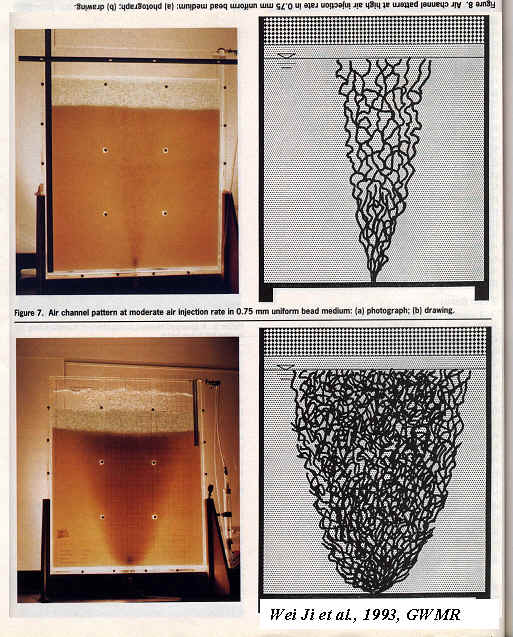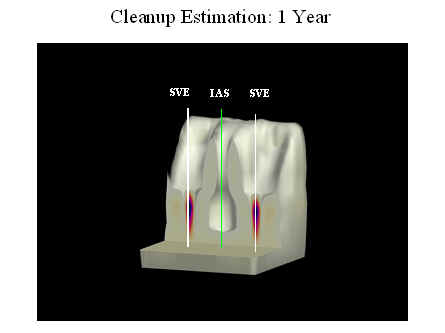IAS works by forcing vapor flow through the aquifer and collecting
volatile contaminants in the vapor stream as it passes through
contaminated zones. IAS
also adds oxygen to the system, which can enhance biodegradation of
amenable compounds.
Unlike most other remediation methods, IAS generates flow gradients away
from the center of contaminant mass. It can also mobilize free and
trapped contaminant oils (NAPL) and push them to new locations.
These attributes can cause rapid and deleterious effects to surrounding
buildings, people, and other receptors. Therefore, the utmost care
in planning and design is necessary for this remediation method.
For most in the industry, IAS has been designed using a field parameter
called the radius of influence. ROI is a real measurement, but by
itself has very little to do with the effectiveness of IAS or lack
thereof. Similarly, SVE is typically used to capture fugitive
vapors from IAS, and it needs to be designed on a flow basis, not an ROI
basis. Flow rates and paths relative to the target contamination and
where IAS exits the water table are the key attributes to successful
sparging design. Because both air and NAPLs are non-wetting fluids,
design synergies exist for sparging that are rarely recognized by most
practitioners.
An efficient IAS design will collect more contaminant mass in less time
and at less cost than a system designed by ROI methods. Both
well-designed and poorly designed systems will go asymptotic, but the
well-designed system leaves much less residual contamination and therefore
greatly reduces the risk and potential liability. Poorly designed
systems often leave zones of original contamination untouched, and
therefore provide no real value because the risk & liability are
unchanged.
Contact AVI for more details and examples of our applied approaches for designing & optimizing IAS systems, as well as defining endpoints of cleanup.



